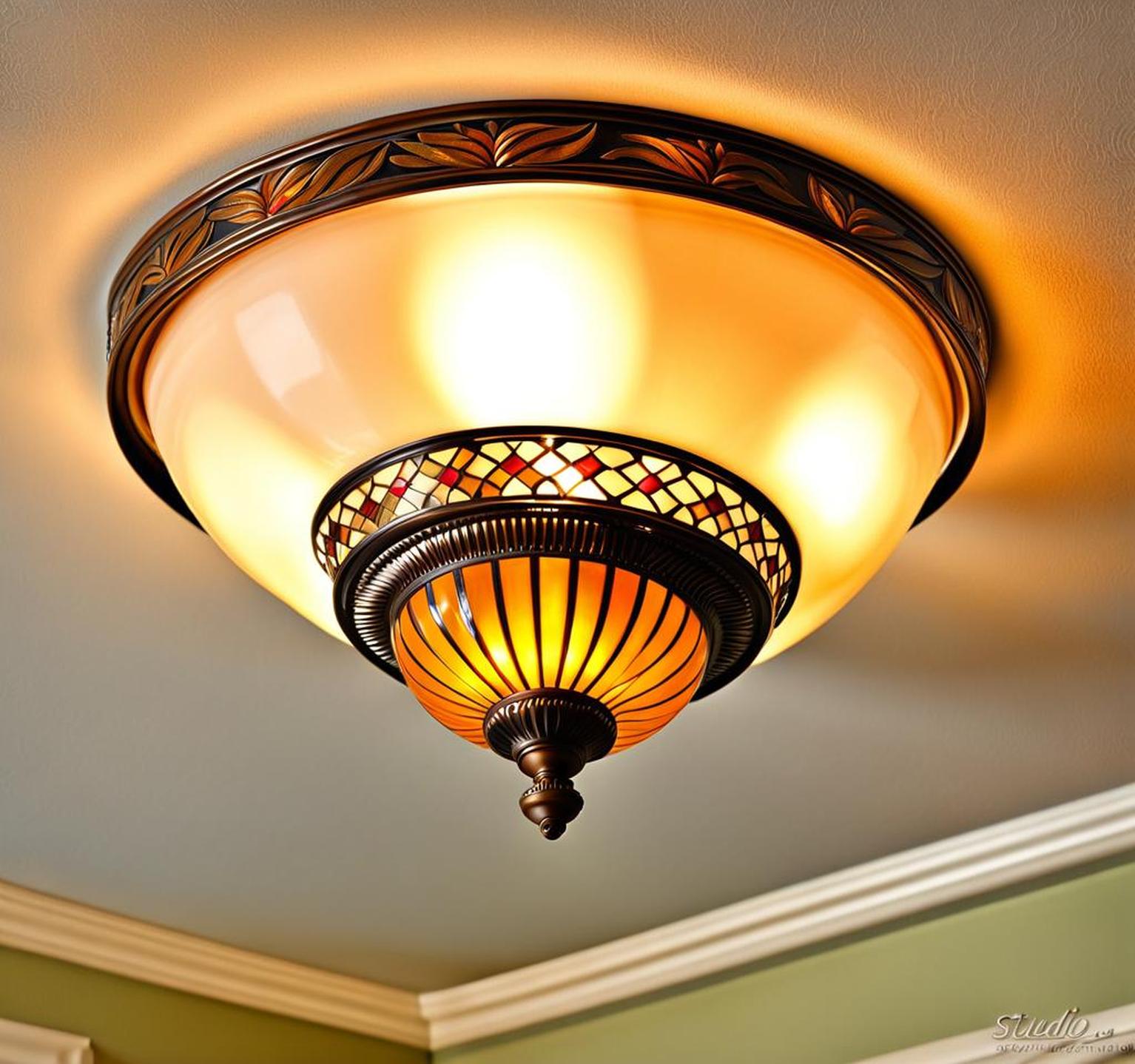The 1930s conjure up images of elegant Art Deco interiors illuminated by glamorous lighting fixtures. During this nostalgic era, many homes still relied on gas for lighting, using ornate gas ceiling fixtures to create a warm, inviting glow. From sparkling crystal chandeliers to subtle porcelain flush mounts, 1930s gas ceiling fixtures came in a dazzling array of styles. Today, these vintage fixtures offer antique charm and ambience that electrically-wired lights simply cannot replicate.
While electric lighting was gaining popularity in the 1930s, many households still used gas fixtures, whether as a primary or secondary light source. The soft flicker of gas flames created a unique mood – perfect for a formal dining room or atmospheric living area. For those enamored with 1930s decor, restoring these antique gas beauties brings back the glamour of this captivating era.
Types of 1930s Gas Ceiling Fixtures
During the 1930s, gas ceiling fixtures took on a variety of forms, ranging from crystal-laden chandeliers to simpler flush mount styles:

Chandeliers
Nothing symbolized 1930s glamour quite like a sparkling chandelier. Typically suspended from an ornate ceiling medallion by a set of chains or rods, chandeliers featured waving arms decorated with glass prisms or dangling crystal accents. Grander styles had up to four curved arms, while more compact two-arm chandeliers better suited smaller spaces. Within the metal frame, a delicate glass mantle protected the inner gas valve and mantles responsible for emitting light. Available in a range of sizes, 1930s gas chandeliers made a dramatic style statement in dining rooms, foyers, and parlor spaces.
Sconces
Less showy than chandeliers, gas wall sconces provided more focused accent lighting. Styles ranged from single-bulb fixtures with crystal-shaped glass shades to multiple arms extending from an ornamental backplate. Sconces often mounted on intricately carved wooden brackets for added decoration. Displaying these lights on walls surrounding a fireplace or flanking a hallway mirror created pools of gas-lit radiance.
Flush Mounts
While lacking the sparkle of chandeliers, flush mount gas ceiling fixtures had an understated aesthetic appeal. Compact circular or rectangle shapes offered versatile placement options in kitchens, hallways, and utility spaces. Porcelain and frosted glass materials blended seamlessly with many interior design schemes, providingsoft, ambient lighting. These subtle fixtures worked well alongside more eye-catching pendant lights in grander rooms.
Restoring 1930s Gas Fixtures
Finding and restoring original 1930s gas ceiling fixtures requires a bit of detective work. But the end rewards make the effort worthwhile.
Finding Authentic Fixtures
Searching architectural salvage yards, antique shops specializing in vintage lighting, and estate sales can uncover rare gas beauties. Online auctions also yield chandeliers, sconces, and flush mounts from the 1930s. When examining potential purchases, look for hallmarks like glass shade materials, ornate metallic frames, and gas valve assemblies to verify if the fixture is original to the era.
Cleaning and Repairs
Once procured, gas fixtures require gentle cleaning of glass shades, lamp bases, and decorative elements. Carefully dusting with a soft brush removes surface debris without damaging fragile components. Use mild cleaners and polish any metal elements to restore their sheen. Rewiring the fixture’s interior wires maintains safety and functionality. For broken glass shades, specialty retailers offer replacement pieces matching common 1930s designs.
Converting to Electric
To avoid the fire and explosion risks of natural gas, updating fixtures to electric provides safer long-term use. This involves removing the original gas valve assembly and mantles. An electrician then installs wiring and light bulb sockets designed to mimic the gentle glow of gas. Bulb choices like tubular LEDs, flame-tip incandescents, or dimmable bulbs give restored fixtures an authentic ambience.
Achieving a 1930s Ambience
Proper installation plays a key role in maximizing the style impact of these nostalgic lights:
Positioning the Lights
Chandeliers and pendant lights should hang at a height in line with typical 1930s ceiling heights. For 8 to 10-foot ceilings, a good general guideline is to mount chandeliers about 66 inches from the floor. Adjust ceiling-mounted medallion rods or chain links to achieve the perfect suspended height.
The scale and location of flush mount and sconce lights also affect ambience. Use several small fixtures to wash hallways or kitchens in uniform lighting. For dining rooms, a pair of two- or three-arm sconces above a serving buffet makes a dramatic style statement.
Complementary Decor
Surrounding restored gas fixtures with era-appropriate furnishings and architectural details enhances the overall 1930s aesthetic. Pair black and chrome dining chairs with a sparkling crystal chandelier. Or showcase an ornamental sconce against damask Victorian wallpaper. Using an accent color that picks up the tones of the fixture’s glass or metal elements also creates cohesion.
Sourcing Reproduction Bulbs
A final essential detail for completing the look involves choosing the perfect lighting bulbs. Since original 1930s bulbs may no longer be available, reproduction bulbs give restored fixtures authentic radiance.
Bulb manufacturers like Original Benson Lamp Works and Bulbrite produce energy-efficient LEDs and incandescents replicating key traits of 1930s lighting. Customers can select bulb shapes, colors, sizes, and brightness levels matching their fixtures’ original designs. Using the proper wattage avoids electrical overloads while showcasing the light’s glorious glow. With thoughtful restoration and the right details, gas-burning relics shine once more, casting a warm 1930s glow.
